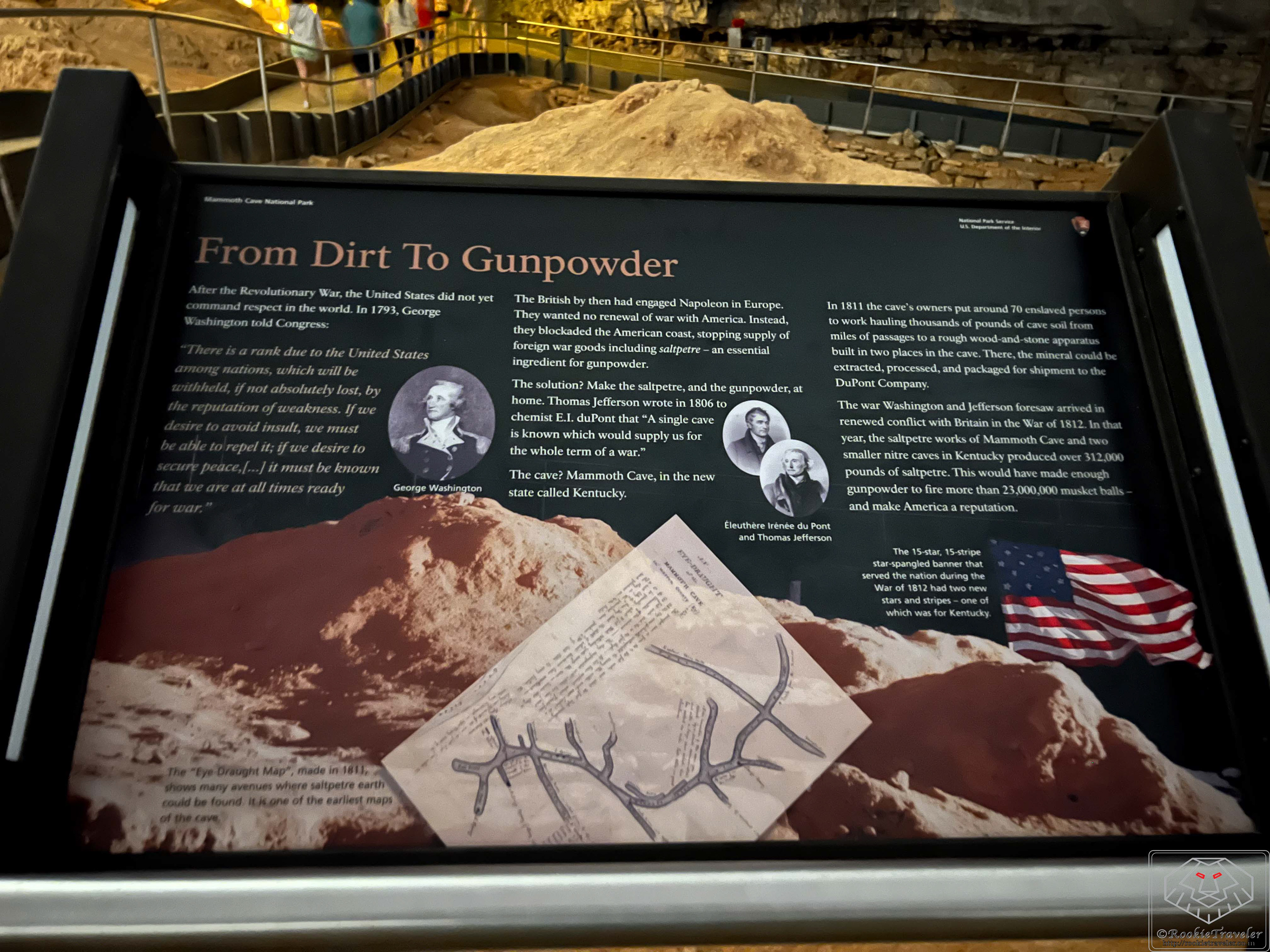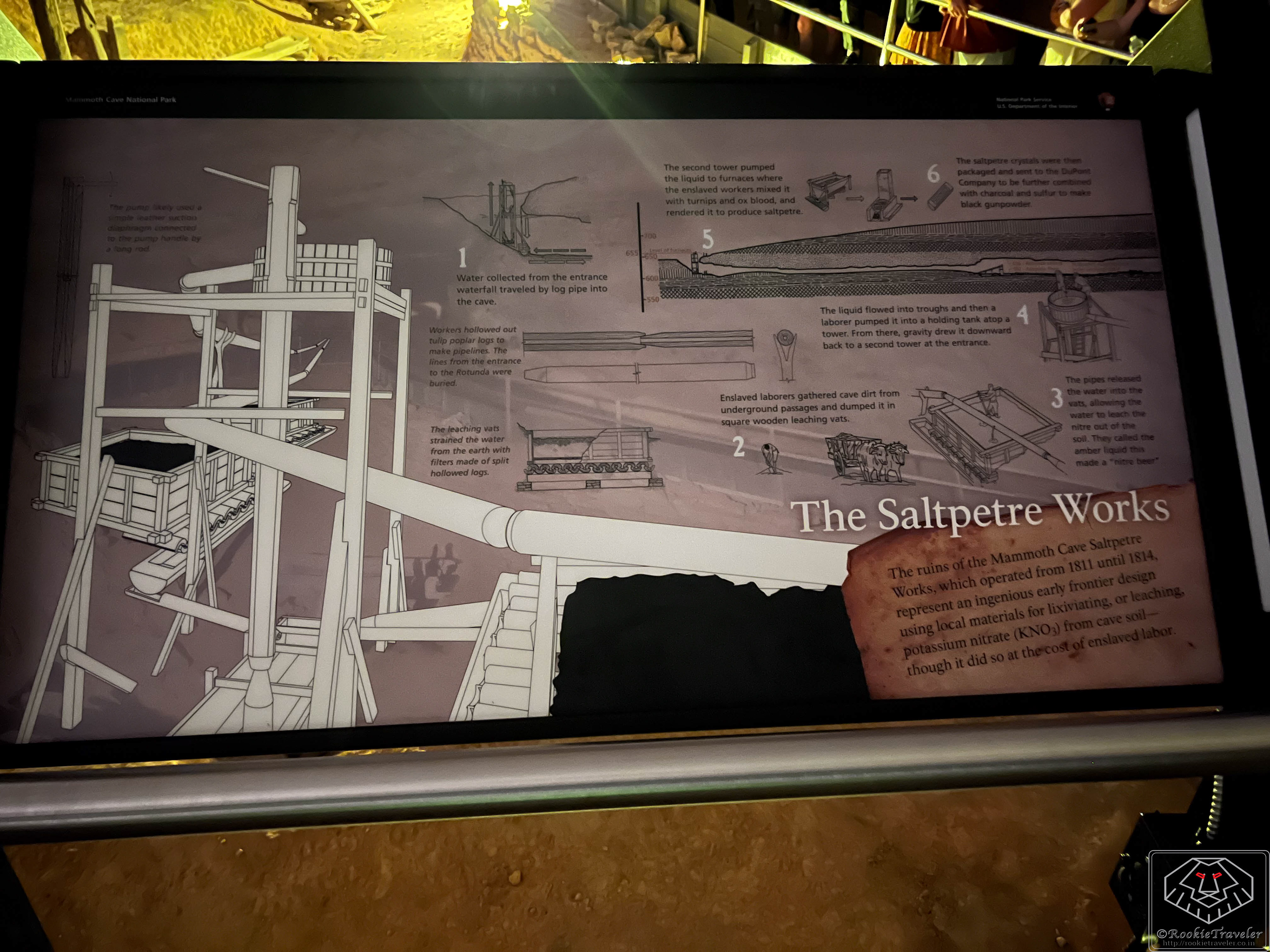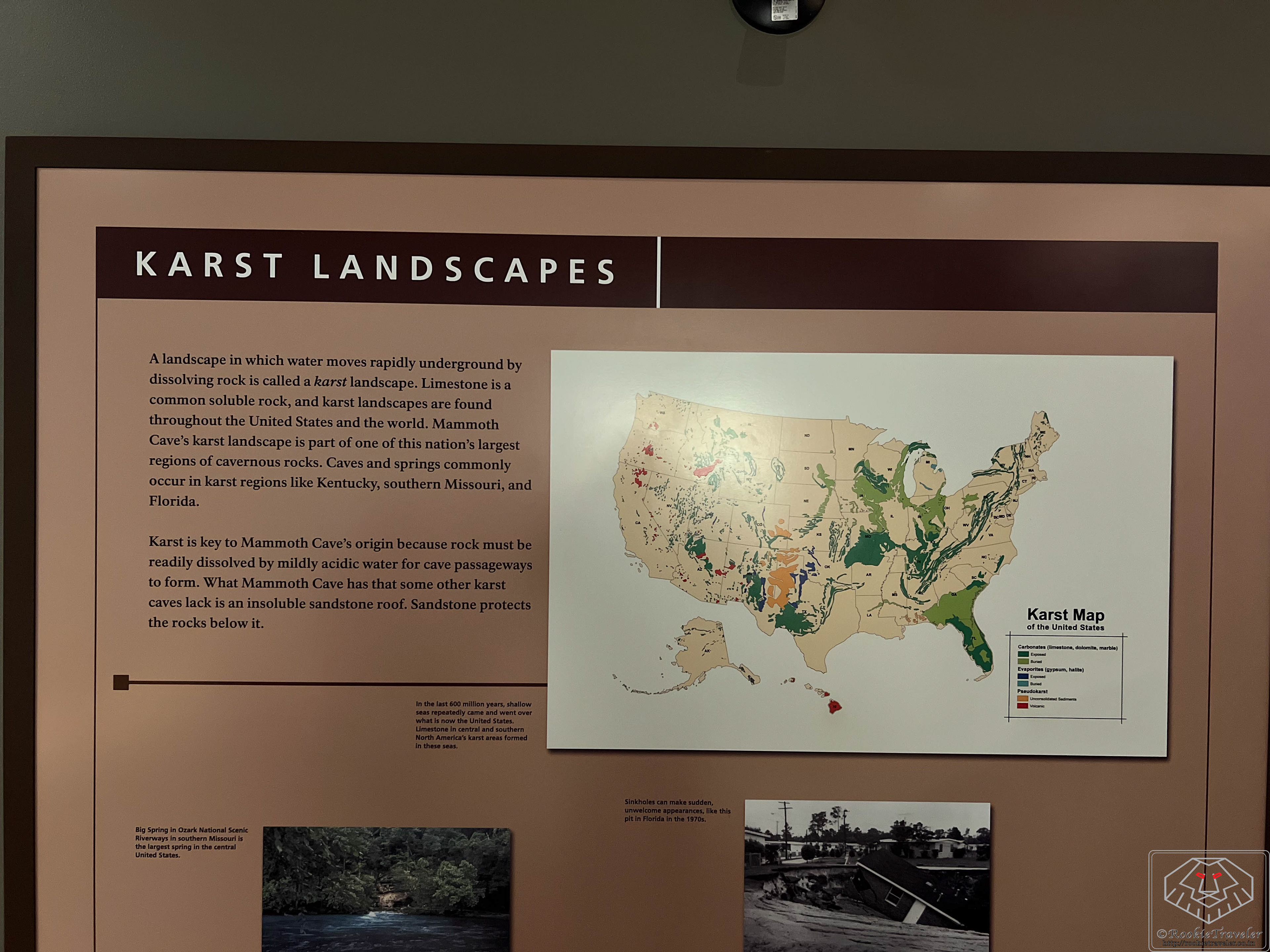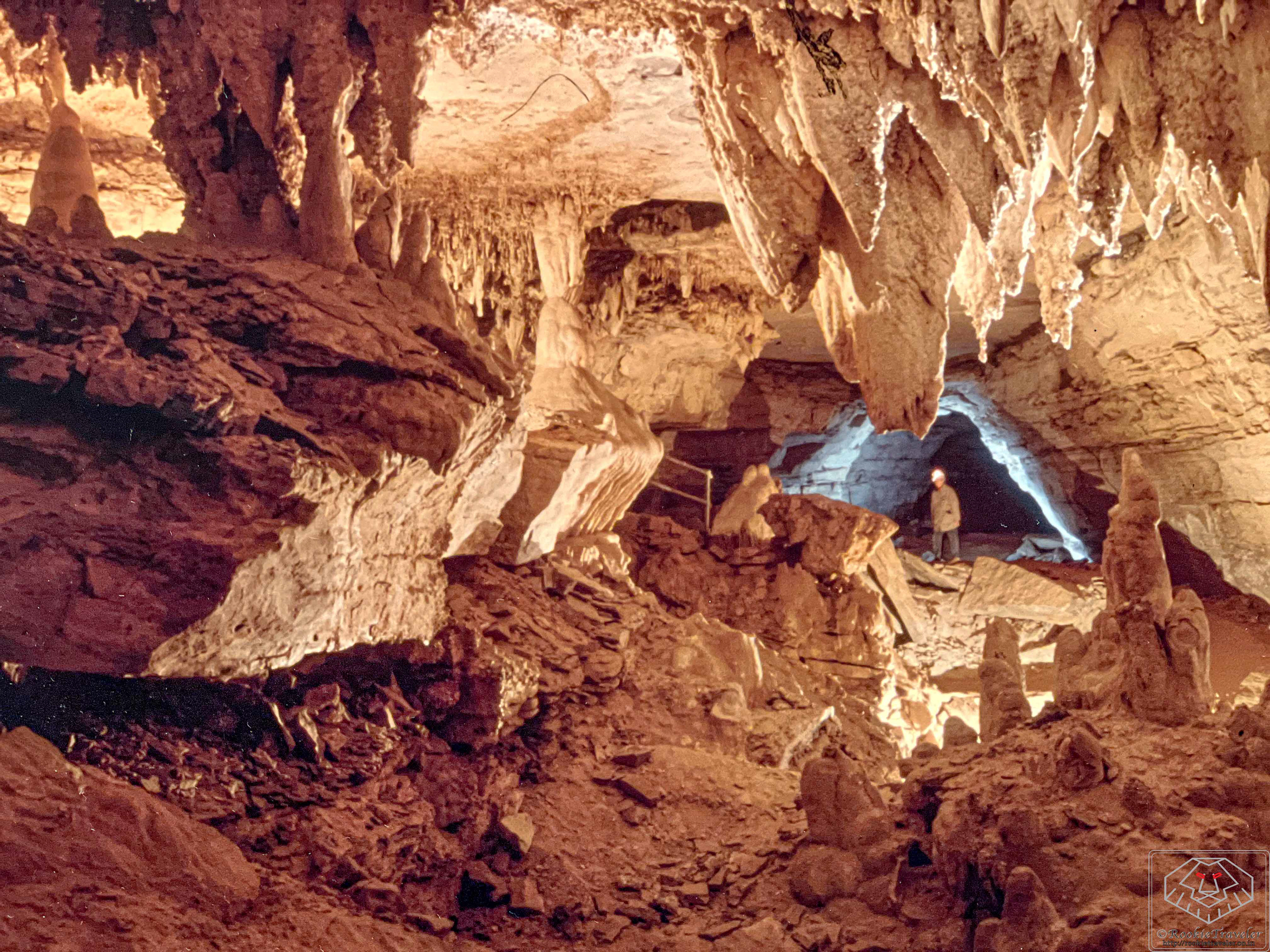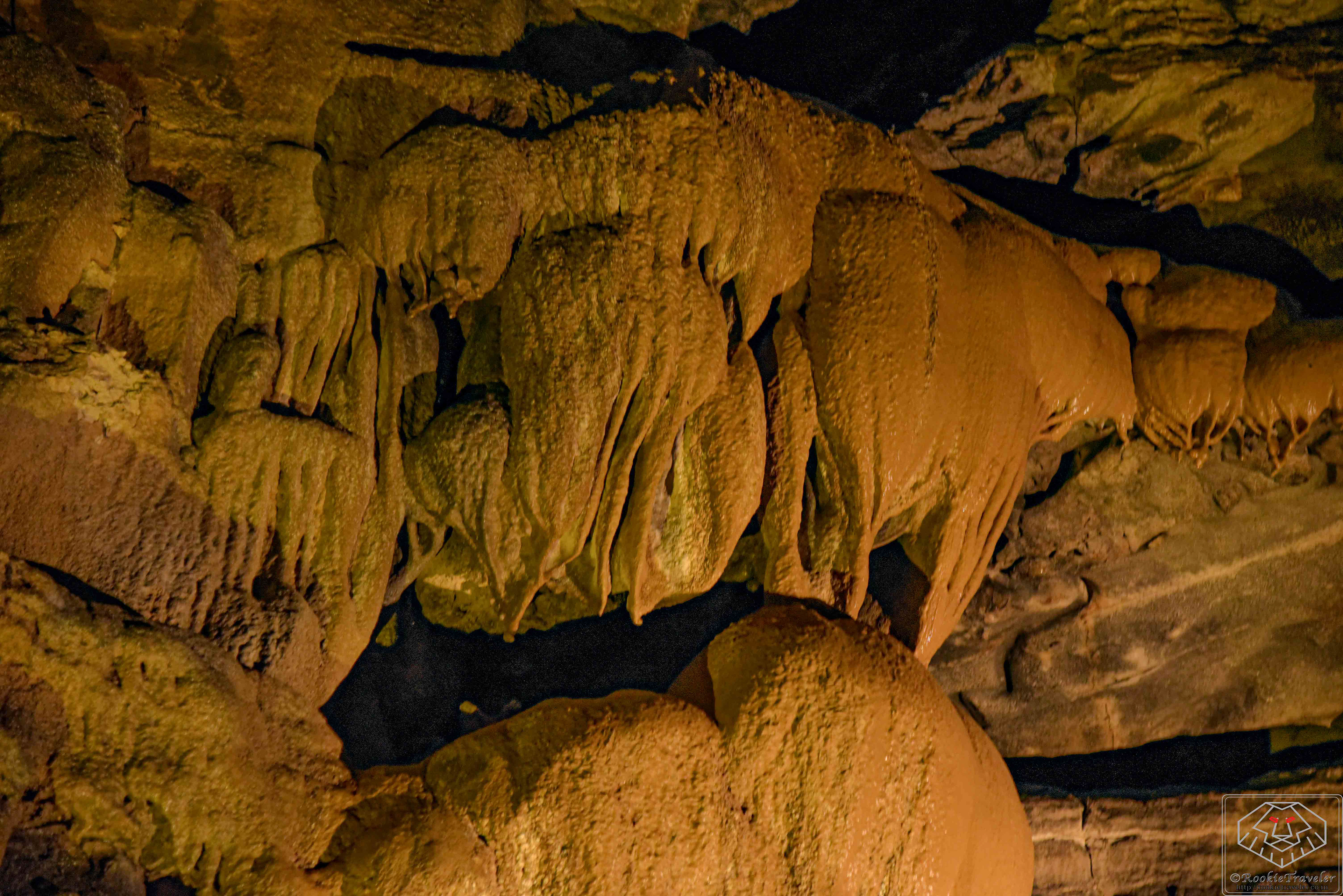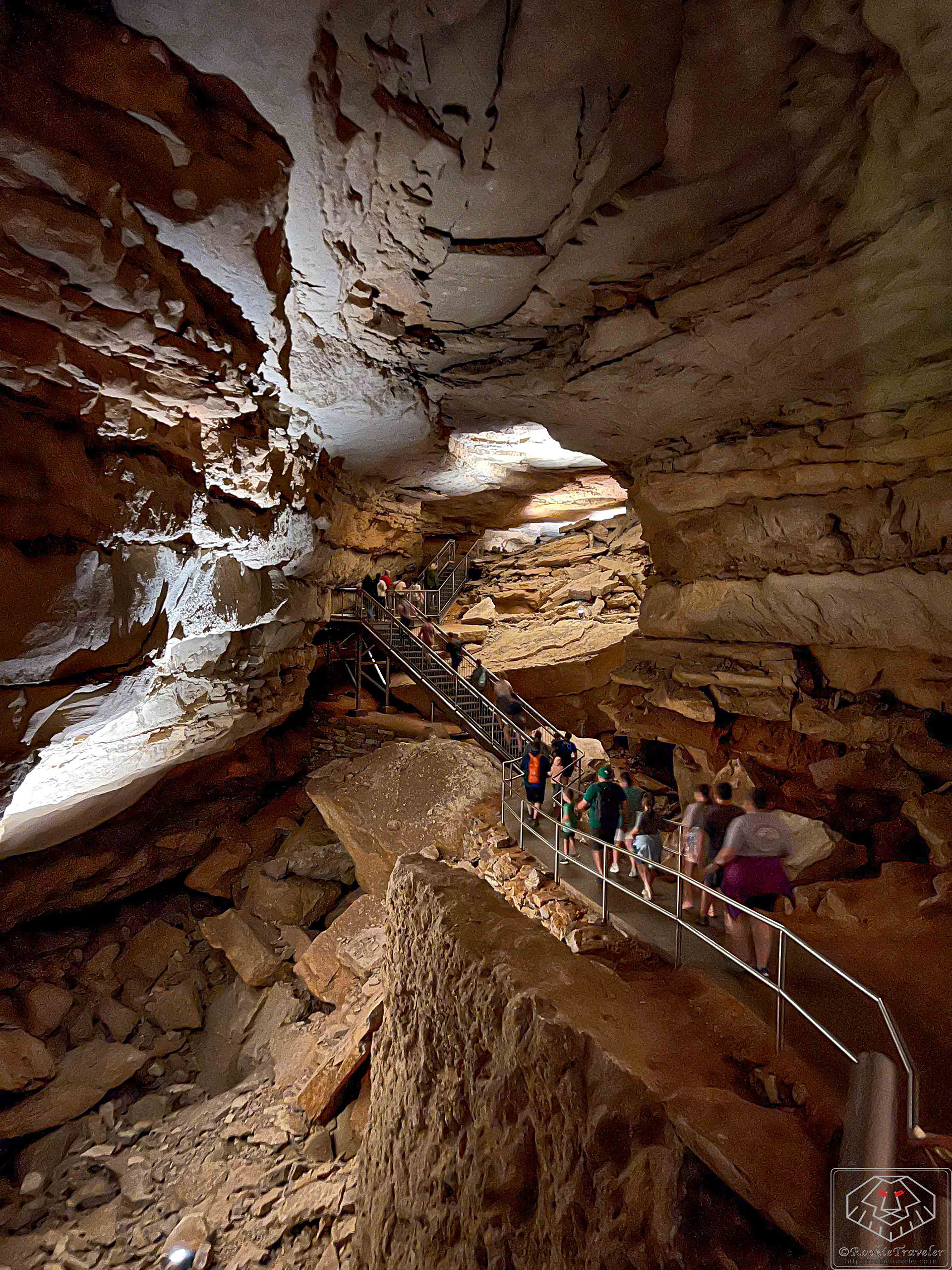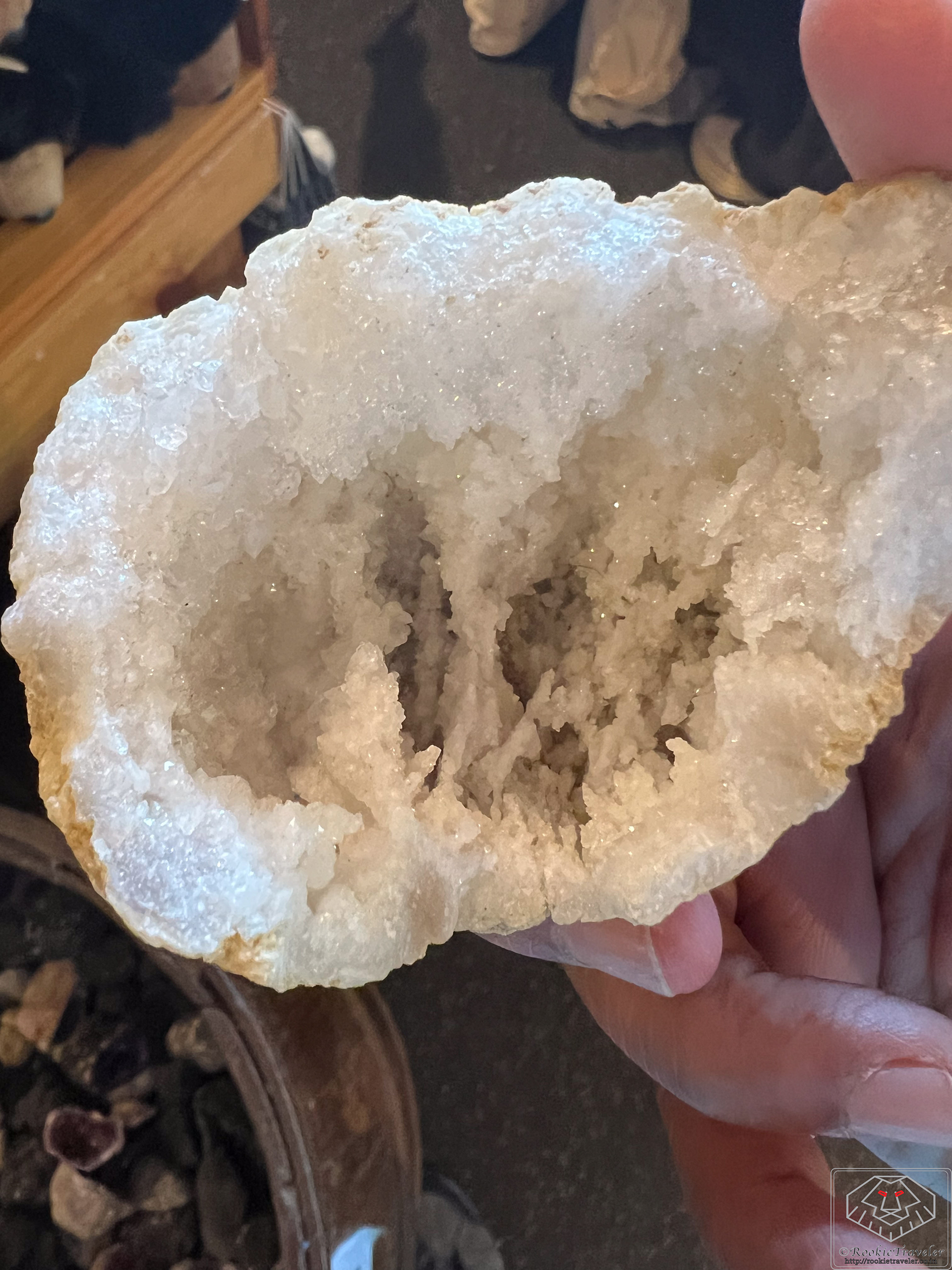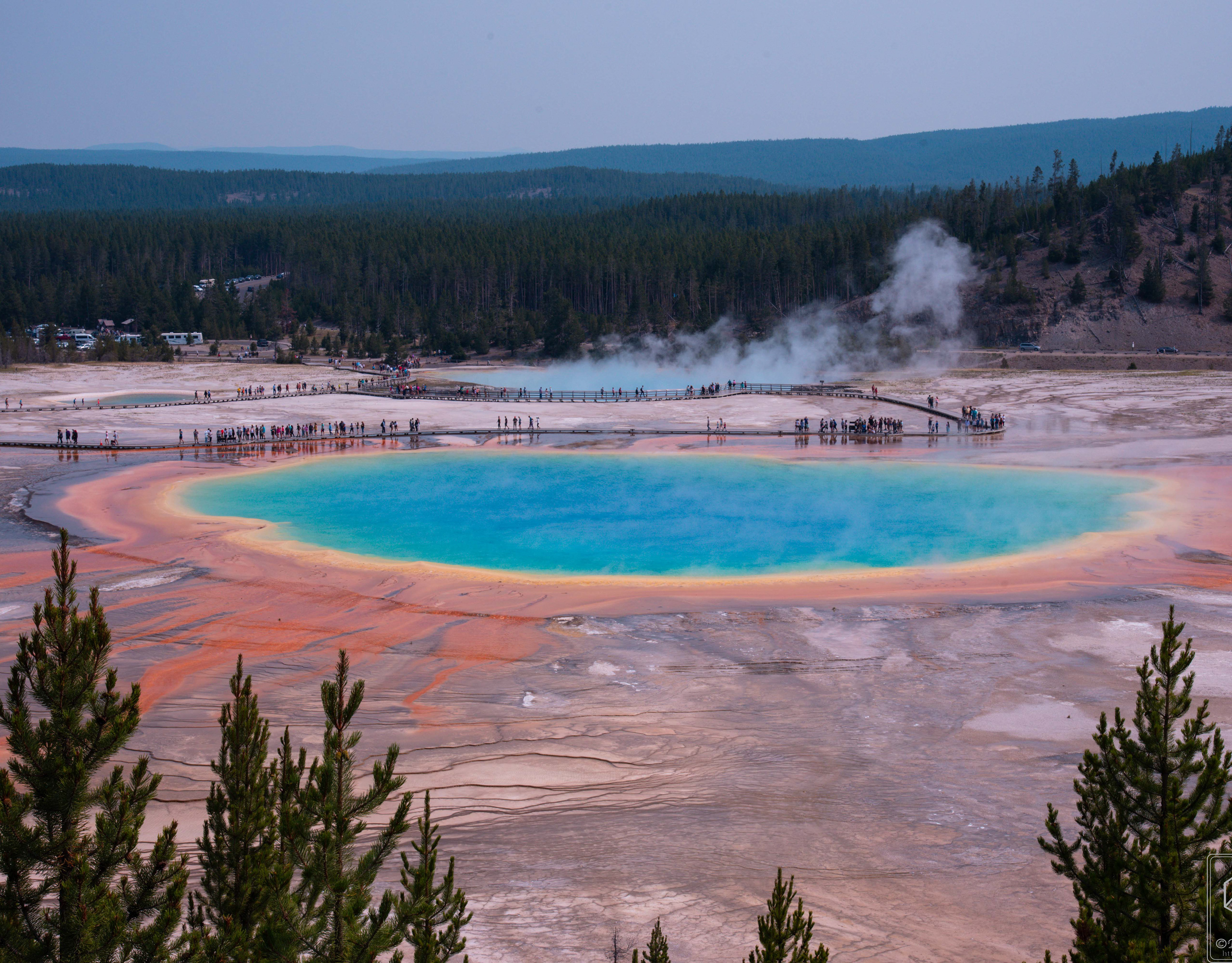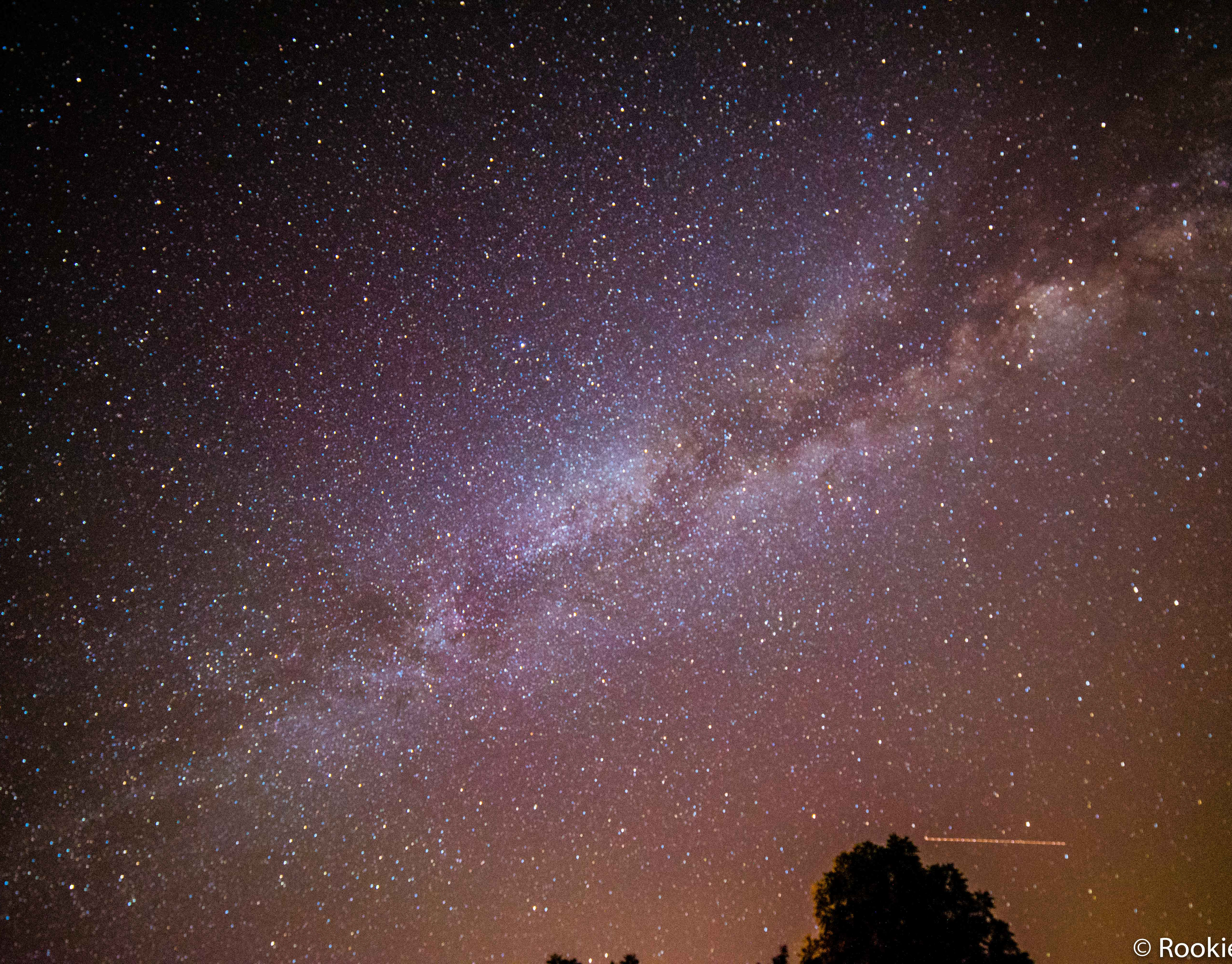Beneath the sandstone and shale ridges of Mammoth Cave National Park lies the largest cave system on Earth. After 4,000 years of intermittent exploration, the full extent of this water-formed labyrinth are unknown. Mammoth Cave's over 420 miles of surveyed passageways make it over twice as long as any known cave. How long might it be? Geologists think there could be 600 more miles of passageways.
Limestone underlies the Mammoth Cave re-gion. As rainwater infiltrates the soil, it picks up small amounts of carbon dioxide gas. Carbon dioxide reacts with the water to form a weak carbonic acid, making the groundwater mildly acidic. Like most major caves, Mammoth Cave was formed by the slow dissolution of limestone by groundwater. Animals living in the cave depend on the quantity and quality of this water.
Eroded limestone landscapes-called karst topography-are typified by the Mammoth Cave area. Sediments of a shallow sea covering this region 350 million years ago formed the limestone as highly soluble layers over a 70-million-year period.
Over time, as groundwater dissolves the lime-stone, it forms underground streams. These streams converge, as surface streams do, and create Mammoth Cave's underground rivers.
Over Mammoth Cave's geologic history the Green River, the region's master stream, has deeply carved and entrenched itself in its val-ley. Cave streams responded by creating younger, lower routes and abandoning older and higher channels, creating a network of cave passages. At depths of up to 450 feet below the surface, cave streams are still forming passages today.
As the cave formed, many aquatic species from surface waters slowly adapted to cave habitats. Several evolved as the specialized animals now found in cave streams. These cave biological communities are part of a nutrient-poor ecosystem that needs excellent water quality to survive.
The geological character that creates Mammoth Cave also threatens the cave's ecology today. Rainwater-turned-groundwater flows readily through the cave's aquatic habitats, but so do pollutants like human waste, agricultural runoff, hazardous spills on roadways, and oil and gas drilling wastes. These are easily washed into cave streams


